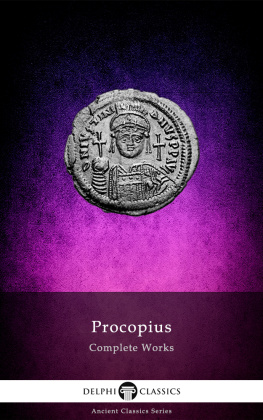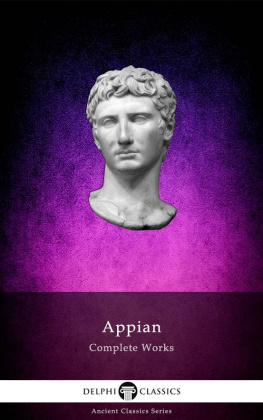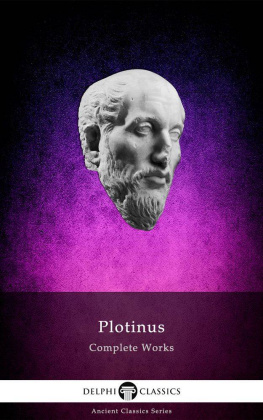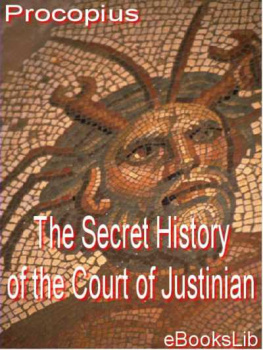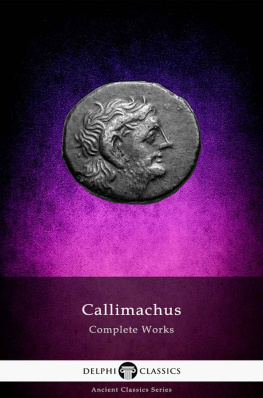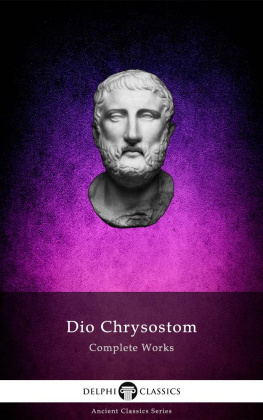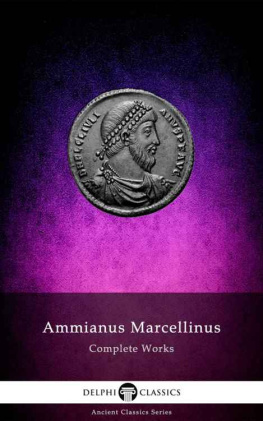Procopius of Caesarea - Delphi Complete Works of Procopius (Illustrated)
Here you can read online Procopius of Caesarea - Delphi Complete Works of Procopius (Illustrated) full text of the book (entire story) in english for free. Download pdf and epub, get meaning, cover and reviews about this ebook. year: 2016, publisher: Delphi Classics, genre: Art. Description of the work, (preface) as well as reviews are available. Best literature library LitArk.com created for fans of good reading and offers a wide selection of genres:
Romance novel
Science fiction
Adventure
Detective
Science
History
Home and family
Prose
Art
Politics
Computer
Non-fiction
Religion
Business
Children
Humor
Choose a favorite category and find really read worthwhile books. Enjoy immersion in the world of imagination, feel the emotions of the characters or learn something new for yourself, make an fascinating discovery.
- Book:Delphi Complete Works of Procopius (Illustrated)
- Author:
- Publisher:Delphi Classics
- Genre:
- Year:2016
- Rating:3 / 5
- Favourites:Add to favourites
- Your mark:
Delphi Complete Works of Procopius (Illustrated): summary, description and annotation
We offer to read an annotation, description, summary or preface (depends on what the author of the book "Delphi Complete Works of Procopius (Illustrated)" wrote himself). If you haven't found the necessary information about the book — write in the comments, we will try to find it.
Commonly regarded as the last major historian of the ancient Western world, Procopius of Caesarea accompanied the Roman general Belisarius in the wars of the Emperor Justinian. Procopius became the principal historian of the sixth century, writing the major work The Wars of Justinian, in addition to The Buildings of Justinian and the infamous Secret History. Delphis Ancient Classics series provides eReaders with the wisdom of the Classical world, with both English translations and the original Greek texts. This comprehensive eBook presents Procopius complete extant works, with beautiful illustrations, informative introductions, special dual Greek and English text and the usual Delphi bonus material. (Version 1)
- Features the complete extant works of Procopius, in both English translation and the original Greek
- Concise introductions to the historical books
- Includes H. B. Dewings translations, previously appearing in the Loeb Classical Library edition of Procopius
- Excellent formatting of the texts
- Easily locate the books or sections you want to read with detailed contents tables
- Includes Procopius rare work THE BUILDINGS OF JUSTINIAN, first time in digital print
- Provides a special dual English and Greek text, allowing readers to compare the sections paragraph by paragraph ideal for students
- Features a bonus biography discover Procopius ancient world
- Scholarly ordering of texts into chronological order and literary genres
Please visit delphiclassics.com to explore our range of Ancient Classics titles or buy the entire series as a Super Set
CONTENTS:
The Translations
THE WARS OF JUSTINIAN
SECRET HISTORY
THE BUILDINGS OF JUSTINIAN
The Greek Texts
LIST OF GREEK TEXTS
The Dual Texts
DUAL GREEK AND ENGLISH TEXTS
The Biography
INTRODUCTION TO PROCOPIUS by H. B. Dewing
Please visit delphiclassics.com to browse through our range of exciting titles
Procopius of Caesarea: author's other books
Who wrote Delphi Complete Works of Procopius (Illustrated)? Find out the surname, the name of the author of the book and a list of all author's works by series.

